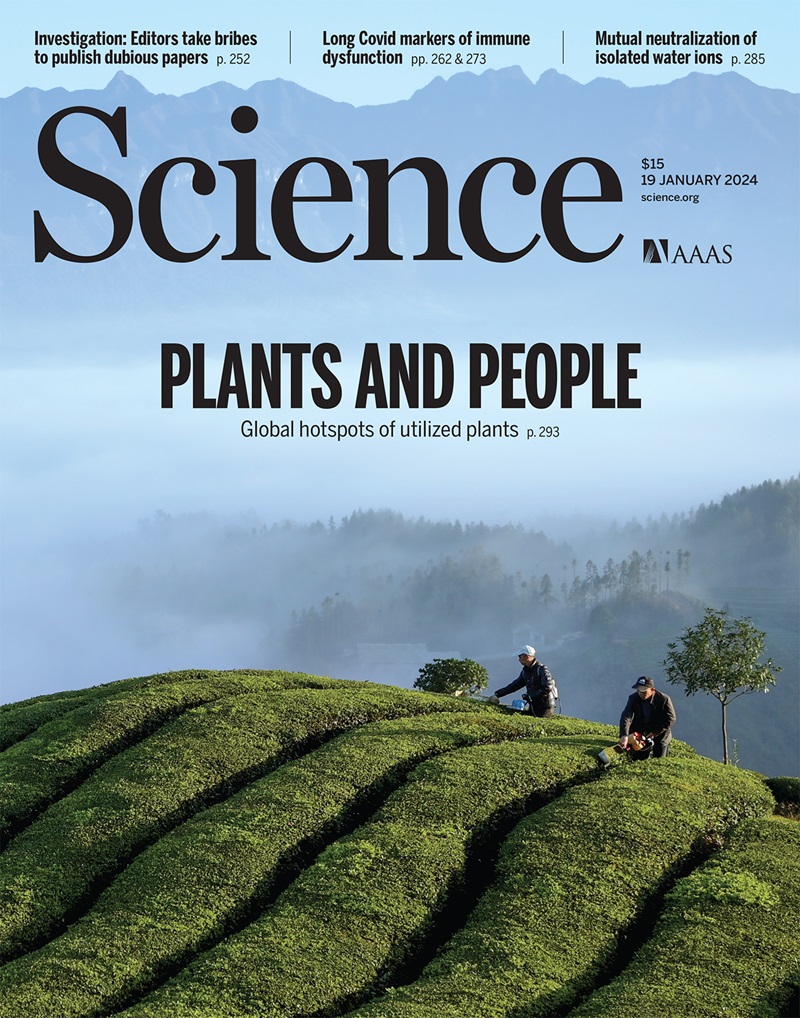Strain-induced rubidium incorporation into wide-bandgap perovskites reduces photovoltage loss
IF 44.7
1区 综合性期刊
Q1 MULTIDISCIPLINARY SCIENCES
引用次数: 0
Abstract
A-site cation mixing can enhance the photovoltaic performance of a wide-bandgap (WBG) perovskite, but rubidium (Rb) cation mixing generally forms a nonperovskite phase. We report that lattice strain locks Rb ions into the α-phase of the lattice of a triple-halide WBG perovskite, preventing phase segregation into a nonperovskite Rb-cesium–rich phase. This process cooperates with chloride accommodation and promotes halide homogenization across the entire film volume. The resulting 1.67–electron volt WBG perovskite exhibits photoluminescence quantum yields exceeding 14% under 1-sun-equivalent irradiation, corresponding to a quasi–Fermi level splitting of ~1.34 electron volts. A WBG perovskite solar cell with an open-circuit voltage (VOC) of 1.30 volts was prepared, corresponding to 93.5% of the radiative VOC limit and representing the lowest photovoltage loss relative to the theoretical limit observed in WBG perovskites.
应变诱导铷掺入到宽带隙钙钛矿中可降低光电压损失
a位阳离子混合可以增强宽带隙(WBG)钙钛矿的光伏性能,但铷(Rb)阳离子混合通常形成非钙钛矿相。我们报道,晶格应变将Rb离子锁定在三卤化物WBG钙钛矿晶格的α-相中,防止相偏析成非钙钛矿富铷-铯相。这一过程与氯化物调节配合,促进了卤化物在整个薄膜体积上的均匀化。得到的1.67电子伏特WBG钙钛矿在1太阳当量照射下的光致发光量子产率超过14%,对应于~1.34电子伏特的准费米能级分裂。制备的WBG钙钛矿太阳能电池开路电压(VOC)为1.30伏,相当于辐射VOC限值的93.5%,相对于WBG钙钛矿的理论限值,光电压损失最低。
本文章由计算机程序翻译,如有差异,请以英文原文为准。
求助全文
约1分钟内获得全文
求助全文
来源期刊

Science
综合性期刊-综合性期刊
CiteScore
61.10
自引率
0.90%
发文量
0
审稿时长
2.1 months
期刊介绍:
Science is a leading outlet for scientific news, commentary, and cutting-edge research. Through its print and online incarnations, Science reaches an estimated worldwide readership of more than one million. Science’s authorship is global too, and its articles consistently rank among the world's most cited research.
Science serves as a forum for discussion of important issues related to the advancement of science by publishing material on which a consensus has been reached as well as including the presentation of minority or conflicting points of view. Accordingly, all articles published in Science—including editorials, news and comment, and book reviews—are signed and reflect the individual views of the authors and not official points of view adopted by AAAS or the institutions with which the authors are affiliated.
Science seeks to publish those papers that are most influential in their fields or across fields and that will significantly advance scientific understanding. Selected papers should present novel and broadly important data, syntheses, or concepts. They should merit recognition by the wider scientific community and general public provided by publication in Science, beyond that provided by specialty journals. Science welcomes submissions from all fields of science and from any source. The editors are committed to the prompt evaluation and publication of submitted papers while upholding high standards that support reproducibility of published research. Science is published weekly; selected papers are published online ahead of print.
 求助内容:
求助内容: 应助结果提醒方式:
应助结果提醒方式:


